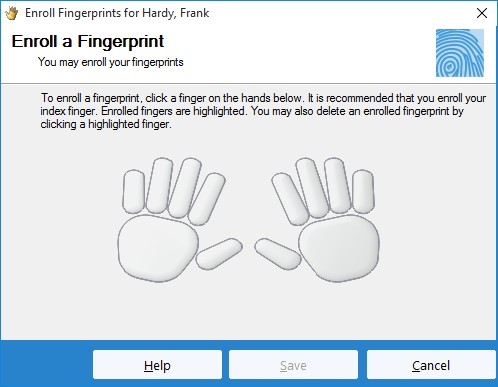

Finally, there are built-in protection mechanisms within the hardware and software to protect personal information. Second, the collected biometric information (facial, palm, or fingerprint recognition data) is only used for a specific purpose of time and attendance tracking. Before this time and attendance solution can be used, each employee is enrolling themselves into the time clock, which is part of the consent. First, we clearly explain how the system works which helps employers provide necessary information to their employees in order to obtain informed consent. built-in temperature reader levels up workplace safety. Facial recognition and voice control allow for touch-free punching, while the. to give your workplace a completely touch-free solution. Integrated voice controls with advanced facial recognition technology. Biometric time clocks offer employers an accurate and reliable way to track employees’ hours, while increasing accountability.

These biometric time clocks offer security against time theft or buddy punching and eliminate lost or worn-out employee time cards. Touch-Free Time Clock with Temperature Reader. The use of biometric-enabled devices has become ubiquitous in the modern workplace. TCP’s elegant biometric time clock solution allows you to attach a fingerprint scanner seamlessly to a touchscreen clock. Midex Time and Attendance solutions provide employers time clocks and software which allow companies to be compliant with PIPEDA. Fingerprint Time Clock Readers Biometric Fingerprint readers are quickly becoming the preferred method for capturing employee time and attendance. Not only do fingerprint time clocks collect accurate data, but they also speed up the process so that supervisors and executives can review and approve timesheets immediately. Biometric identification systems require the employees to be there in person to punch in/out using retina, fingerprint, palm, or facial scanners. For example, a staff puts a finger on the device reader or speaks a phrase to the device. When staff clock in and out, they let the device scan their biometrics (fingerprints, face, iris, etc.). The use of biometric data for commercial purposes in Canada is governed by the Personal Information Protection and Electronic Documents Act (PIPEDA), which stipulates that (1) informed consent must be obtained, (2) personal information can only be used for the purposes for which it was collected, and (3) it must be protected by appropriate safeguards. However, by using digital systems, employees simply clock in when they arrive and out when they leave for the day, all of which can only be activated with biometric data of each individual employee. A typical biometric time clock operates with 3 main steps: A time clock device captures the biometrics of staff and stores them as digital templates. Twelve malls across Canada were found to have been collecting and using facial recognition on images of 5 million consumers without their consent. Time and Attendance Solutions for Large Enterprises.


 0 kommentar(er)
0 kommentar(er)
